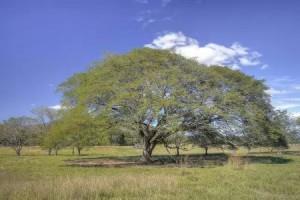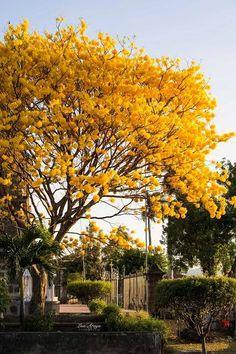
The Magnificent Tree Species of Costa Rica, Beautiful and Imposing
Costa Rica is a wonderful place surrounded by nature and peace throughout its territory. It is a nature-favored country in terms of its biodiversity , recognized worldwide for its different tropical forests, protected by national parks and private reserves. In its small but beautiful area, the country is home to 5% of the world's biodiversity.
Predominantly with trees and other woody vegetation, which occupies a large percentage of its landmass? In its natural state, the forests remain in self-regulated conditions for long periods. The climate, soil, and topography of the region determine the plant characteristics of the forest ; dominant trees are associated with certain herbs and shrubs.
The following is the most predominant and significant arboreal species of Costa Rican Forests:
a) Cedrela odorata meliaceae (Cedar) :
A large tree, gray bark with vertical fissures. It can reach up to 30 meters high. The fruits are dry dark brown capsules, which open when they ripen in 5 segments or leaflets like a flower, letting out a lot of seeds. The flowers are very small, grouped in clusters that emit a penetrating smell, similar to garlic and onion. There are male and female flowers, but both are present in the same tree.
b) Enterolobium cycloarpum mimocaceae (Guanacaste) :

Very wide cup (10 mt in diameter). It can reach 30 mt heights. Thick trunk up to 2.5 mt in diameter, light gray and smooth bark. The fruits serve as food for cattle and other animals. The fruits resemble one ear (hence its name). The name Guanacaste comes from the Aztec language quaitil = tree and nacaztli = ear, that is, tree of the ears. White flowers, grouped in small and spherical inflorescences, with very long stamens (similar to the dorilone flowers).
c) Psidium guajava mirtaceae (Guayabo):
The fruits are large in the form of drupa, producing hundreds of seeds and serve as food for many animals, as they have a pleasant taste and are rich in vitamin C. The flowers are medium with five yellow to white petals, with long stamens. It reaches up to about 10 mt. The tree is small to medium. The cup is dense, round and extended, the bark is smooth white and brown and detaches into small segments (shells).
d) Ficus costa Rican Moraceae (Higuerón):

A large tree initially grows as a parasite. Extended cup, long and powerful branches from which aerial roots emerge, which merge to form the trunk? The flowers and fruits develop in a spherical structure called sicono. The siconos are a type of fig and when they ripen they are red, so they are food for birds, especially the Yigüirro. It is pollinated by wasps.
Ornamental Trees .
There are many varied ornamental tree species that with their striking flowering adorn at different times of the year in our country:
a) Erythrina poeppigiana (Poró):
In the Central Valley, it is the most abundant species. Its inflorescence is an intense orange color, with a dark brown trunk; it is a tall tree, which sometimes reaches 25 to 30 meters. Its main flowering season is from January to March. A very interesting fact that is worth knowing, is that the fleshy petals of these flowers are edible, and can be eaten raw – they taste like cabbage or spinach – in salads, or cooked in hot dishes like any other vegetable.

b) Tabebuia ochracea (Cortés): It is one of the most beautiful flowering trees we have in the country, very striking, of intense yellow color, it is rare to find it in wide dense areas, it is usually isolated from other trees of the same species, so during flowering season it stands out because It is surrounded by other species with green foliage; In addition to the above, not all copies bloom simultaneously. It is widely used for tourist propaganda.
c) Spathodea campanulata (Llamarón): It is a tree of about twenty-five meters high, very impressive for its large orange flowers, accompanied by dark green foliage; it is called the 'king of the forest because in evergreen areas it stands out from great distances, giving the impression of a flame that rises to the sky. Its main flowering season is at the end of winter.
d) American diphysa (Guachipelín) : It is the first tree that blooms at the beginning of the dry season. The Guachipelín's characteristics are its rough bark with striking yellow fissures, more evident in young trees.
The Papillionaceae plant family: these flowers are known as 'roosters' and are characterized by being rather small.
Costa Rica will continue to be a great haven of immense biodiversity, with its conservation programs as mainstay policies for the environment.

At Resonance, we aspire to live in harmony with the natural world as a reflection of our gratitude for life. We are co-creating an inspired and integrative community, committed to working, living and learning together. We resonate with that deep longing to belong to the hive and the desire to live the highest version of ourselves in service.

Legal Disclaimer:
MENAFN provides the
information “as is” without warranty of any kind. We do not accept
any responsibility or liability for the accuracy, content, images,
videos, licenses, completeness, legality, or reliability of the information
contained in this article. If you have any complaints or copyright
issues related to this article, kindly contact the provider above.


















Comments
No comment